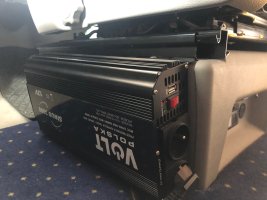S
stim
There are a few threads on here about this but no one seems to have actually taken out the standard 300w (for a T6.1) inverter and swapped it for something bigger, between say 500-1000W and re-used the existing plug in the seat base. On my LH drive T6.1 beach, the plug is on the RH side of the driver's seat but the actual inverter is under the passenger seat. The wires coming out of the back of the plug are very thin so I guess these would need to be upgraded too.
Does anyone have any idea if this would be possible and whether it would be difficult? I have only found an upgrade that adds an additional, huge 2000W inverter under the RH seat and keeps the existing inverter in place. This means an extra plug socket in the back of the RH seat base trim.
FYI, I don't want to buy an Ecoflow (which seemed to be the suggested solution on another thread) and I would like a pure sign wave inverter with a higher capacity to charge an ebike. I intend to upgrade my standard 75Ah leisure battery to a 110Ah LiFePo4.
Thanks!
Does anyone have any idea if this would be possible and whether it would be difficult? I have only found an upgrade that adds an additional, huge 2000W inverter under the RH seat and keeps the existing inverter in place. This means an extra plug socket in the back of the RH seat base trim.
FYI, I don't want to buy an Ecoflow (which seemed to be the suggested solution on another thread) and I would like a pure sign wave inverter with a higher capacity to charge an ebike. I intend to upgrade my standard 75Ah leisure battery to a 110Ah LiFePo4.
Thanks!

















